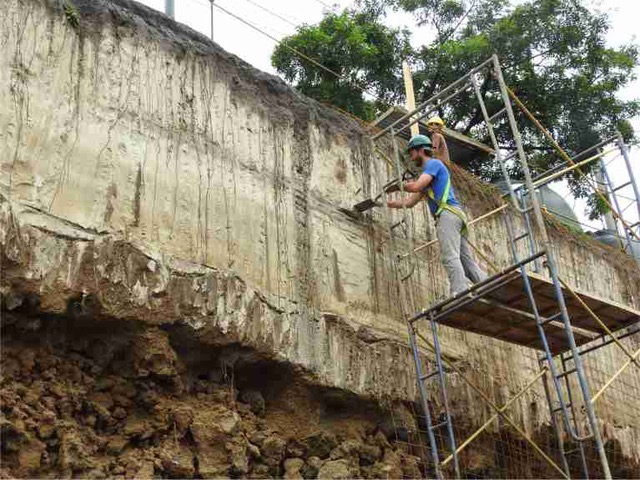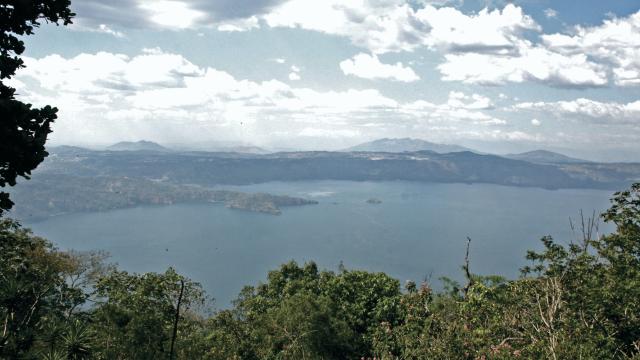Using a combination of archaeological and geological evidence, scientists have finally pinpointed the date of the infamous Tierra Blanca Joven eruption, which likely devastated Maya communities in what is now El Salvador.
Ilopango volcano blew its stack 1,589 years ago — give or take a year or two — according to new research published this week in Proceedings of the National Academy of Sciences. That this volcano erupted well over 1,000 years ago was well established, but the new research finally firms up the date, in a paper that will be of interest to archaeologists, historians, geologists, and climate scientists.
The Ilopango caldera is situated within the Central American Volcanic Arc (CAVA), which stretches from Guatemala to Panama along the Pacific coast. So powerful was the Tierra Blanca Joven eruption that areas to within 80 kilometres of the vent were rendered uninhabitable for years and possibly decades following the explosion.
“Nonetheless, the more widespread environmental and climatic impacts of this large eruption are not well known because the eruption magnitude and date are not well constrained,” wrote the researchers in the study.
The researchers used three different lines of geological evidence to pinpoint the eruption date of 431 CE, including volcanic shards found in ice cores sourced from Greenland (the shards were subsequently linked to the Ilopango volcano), sulphur spikes found in Antarctic ice cores, and radiocarbon dating of a charred tree found in volcanic ash deposits. Archaeological evidence also jibes with this date, as ceramic production in El Salvador suddenly ceased around this time, a pause that lasted about 100 to 150 years.

To learn more about the eruption itself, the researchers gathered and sampled ash deposits strewn across El Salvador.
“A great part of this research has been possible thanks to all the data acquired during three field campaigns carried out in El Salvador during which we conducted a detailed mapping of the ash deposits present in an area of 200,000 square kilometres,” Dario Pedrazzi, a researcher at Geosciences Barcelona–CSIC (GEO3BCN) and a co-author of the study, explained in a press release.
By measuring the dispersal of tephra — bits of fallen rock and volcanic debris — the scientists were able to simulate the eruption. As the model showed, the explosion sent a plume 45 km high into the atmosphere, and it spread ash some 7,000 km away, including all the way to Greenland. Approximately 55 cubic kilometres of magma poured out from the volcano, and more than 2 million square kilometres of Central America was blanketed in ash, according to the study.
Sunlight didn’t reach the surface for around a week, as Victoria Smith, the first author and an archaeologist from the University of Oxford, explained in the press release. The Tierra Blanca Joven eruption “was more than 50 times bigger than that of Mount Saint Helens,” which erupted 40 years ago, and the “pyroclastic flows from the eruption of Ilopango were 10 times the volume of those from Vesuvius, which erupted in 79 CE, preserving the Roman city of Pompeii in ash,” she said.
The eruption likely caused a cooling of temperatures in the Southern Hemisphere for a few years, but only by a factor of 0.5 to 1 degree Celsius. That said, “there are too few well-dated paleoclimate proxy records for the Southern Hemisphere to verify the climatic effect of the eruption,” wrote the study authors.
Importantly, this eruption happened during the Early Classic Period (circa 300 to 600 CE), a time when the Maya culture flourished in Central America. The eruption, while catastrophic at the local scale, did not impact Maya communities elsewhere, or at least not to a significant degree; the eruption “appears to have only had major effects on populations within ∼80 km of the volcano,” according to the study.
Other researchers should now take the newly established date and see if they can correlate it with events from the year 431 CE and in the immediate years that followed. As other research has shown, volcanic eruptions exert a long reach, influencing events on the other side of the world.
